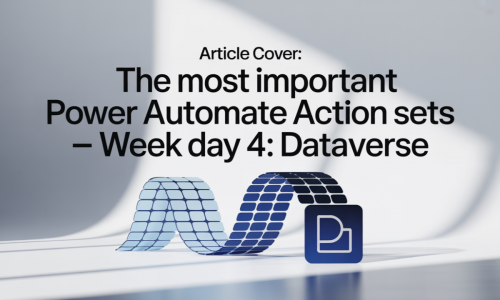Power Platform Bad Decision Week Day 3 – Every Flow in Default Environment: Chaos as a Service
-
Admin Content
-
Oct 03, 2025
-
250
The Illusion of Convenience
At first glance, creating every Power Automate flow in the Default environment feels like the simplest, most efficient choice. It’s right there when you log in, so why complicate things? After all, the Default environment is pre-provisioned, accessible to everyone, and ready to use without additional setup. For many new makers, it seems like the most logical place to begin building automations.
But what looks like convenience quickly becomes chaos. When every flow is crammed into the Default environment, the lack of boundaries makes it nearly impossible to manage, govern, or secure processes. What starts as a handful of test flows can spiral into hundreds of unorganized automations, each competing for resources, cluttering the environment, and creating a breeding ground for operational risk.
The real danger lies in mistaking accessibility for scalability. While the Default environment makes it easy to get started, it was never designed to serve as the central hub for enterprise automation. Treating it that way transforms a convenience into a liability.
Governance Black Hole
One of the most damaging consequences of this approach is the collapse of governance. With every maker in the organization defaulting to the same environment, the result is a jungle of untracked, unreviewed, and unmanaged flows. Admins lose visibility into what’s running, when it’s running, and—more importantly—why it’s running.
Imagine trying to audit a process when hundreds of unrelated flows are living in the same space. Hunting down which one is responsible for sending rogue emails or overloading a system becomes a needle-in-a-haystack problem. Without proper environment strategy, organizations inadvertently create shadow IT inside their very governance framework.
Worse still, the lack of separation between test, development, and production flows means mistakes easily bleed across contexts. A flow that was meant to be experimental can suddenly impact real data. The absence of guardrails opens the door to unintended disruptions, costing both time and money.
Performance and Reliability Nightmares
Beyond governance, centralizing every flow in the Default environment leads to serious performance bottlenecks. Power Platform is designed to scale, but when too many flows are competing in one environment, throttling and failures become inevitable.
Flows that are critical for business operations may end up competing with one-off personal experiments for capacity. When they all share the same pool of resources, priorities get blurred. A small automation built for convenience could inadvertently slow down or even block a mission-critical process.
This creates a reliability nightmare. End users who depend on automation expect consistency. When flows fail or lag due to environmental congestion, confidence in the platform drops. Instead of empowering the business, the system becomes a source of frustration, reinforcing skepticism toward low-code tools.
Security Risks Multiply
Security concerns compound the chaos. By default, every licensed user has access to the Default environment. That means anyone can create flows with broad-reaching connectors and permissions. Without structured environments, there’s no effective way to separate sensitive automations from casual experiments.
Consider the implications of a flow that accidentally sends sensitive data to the wrong recipient, or one that opens up unintended integration paths. These risks are amplified when flows aren’t compartmentalized by purpose or security requirement. The more uncontrolled flows exist in the Default environment, the harder it becomes to safeguard data, enforce compliance, and manage user access.
In short, placing everything in the Default environment is like leaving the office door unlocked with a sign saying, “Feel free to experiment with sensitive systems here.”
A Smarter Path Forward
The good news is that this chaos is entirely avoidable. Establishing a thoughtful environment strategy is the antidote. Instead of defaulting to Default, organizations should create environments dedicated to specific functions—development, testing, and production—or aligned to business units and departments.
This structured approach allows governance policies to be applied more effectively. Admins can control who has access to what, apply data loss prevention (DLP) policies where they’re needed, and keep mission-critical flows safe from experimental tinkering. With separate environments, auditing and troubleshooting become manageable tasks instead of Herculean efforts.
Equally important, an intentional environment strategy improves performance and reliability. By isolating workloads, organizations can ensure that important business processes run smoothly without interference from low-priority flows. It turns Power Automate from a chaotic free-for-all into a well-organized service that supports both innovation and stability.
Chaos as a Service—By Design
Relying on the Default environment for everything isn’t just a bad decision—it’s practically an invitation to chaos. It takes the promise of automation and twists it into a liability, eroding trust, security, and performance. The irony is that the very tool designed to bring order and efficiency becomes the source of disorder when used without strategy.
Chaos as a Service may sound amusing as a catchphrase, but in reality, it represents costly downtime, compliance risks, and frustrated employees. The Default environment has its purpose, but it’s not meant to be the heart of enterprise automation. Recognizing this distinction is the key to moving from chaos toward control.
The path forward is clear: treat environments with intention, align them with governance needs, and resist the temptation to put everything in Default. That’s how organizations unlock the full potential of Power Platform—without the chaos.





